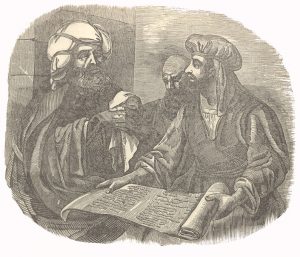 This is Part IV in my exploration of the challenges and criticisms raised by Rick Lanser in his article The Seraiah Assumption as posted on the Associates for Biblical Research website here: The Seraiah Assumption
This is Part IV in my exploration of the challenges and criticisms raised by Rick Lanser in his article The Seraiah Assumption as posted on the Associates for Biblical Research website here: The Seraiah Assumption
Do you really believe the Bible accurately records ancient history?
In this article and forthcoming articles, as we further expand on the history of the Biblical figure Darius I or as he is described in the book of Ezra, Darius even Artaxerxes, I hope to impart to you a renewed sense of wonder and appreciation for the accuracy of the Biblical record. Frankly though, the amazing accuracy of the Biblical record is only part of the real story, and the lesser part at that.
You see, I believe that Biblical history was not written in a contextual vacuum. It has a purpose, and that purpose is to provide you and me with the chronological and contextual foundation upon which to understand and believe the Bible’s redemptive story. As I’ve often shared with you in these articles, by the Bible’s own testimony, its stories and its chronology, when understood in its intended context, offers compelling evidence that shows us our Creator, Yahweh, has been actively directing history to bring about His redemptive plan for mankind through His Yeshua (Jesus). (The Hebrew name Yeshua means Yahweh’s Salvation or the Salvation of Yahweh.)
The most unique aspect of the Bible and its message is that Yahweh’s redemptive plan for mankind has been spelled “from the foundation of the world” in prophetic utterances which were given before the events described came to pass. These prophecies offer unique proof that the Bible is a divinely inspired testimony that can be trusted to provide us with a window into the past, an understanding of the present, and the confidence to face the future – all of which gives us the assurance and grace to live this life with meaning and purpose.
And he shall send Jesus Christ, which before was preached unto you: Whom the heaven must receive until the times of restitution of all things, which God hath spoken by the mouth of all his holy prophets since the world began. (Acts 3:20-21)
That window into the past, present, and future only makes congruent sense when it is seen through the contextual lens of Yahweh’s salvation, His Yeshua. As John explained in Revelation 19:10
“…the spirit of prophecy is the testimony of Yeshua” (Rev. 19:10)
In other words, the “spirit of prophecy “ is the testimony of Yahweh’s salvation for mankind.
Darius and the Spirit of Prophecy
In all of the Bible’s 66 books, there is only one prophetic utterance that provides mankind with a specific and verifiable timeline for the coming of Yahweh’s promised Messianic redeemer, His Yeshua.
That prophecy is found in Daniel 9 and what most of us know today as the prophecy of 70 “weeks” or more accurately the prophecy of 70 Sevens. It’s worth repeating, this is the only prophecy in the Bible which provides specific chronological synchronisms between Biblical and secular history. It would not be an exaggeration to say that upon this prophetic utterance hangs the chronological bedrock of a vast part of Bible’s prophetic record.
As a Berean, one of the things that has really challenged me over the years is the lack of stewardship by many of my peers regarding the chronological foundation of Daniel 9. If Daniel 9 and the 70 Sevens prophecy is really as important as nearly all expositors of Bible prophecy claim (and indeed I believe it is) then why has the chronological foundation upon which this divine prophetic countdown to the Messiah has been built so inadequately addressed?
Do you really believe that Yahweh gave us a specific prophetic utterance that tells us when His Yeshua would come and then leave it up to us to guess about when that countdown to the Messiah would begin? Take for instance the reign of Artaxerxes I (Longimanus). Did you know that there are only a very few Persian records that mention him or his reign? Little of what we know about this Persian king comes from actual Persian inscriptions or other first hand Persian era records.
Yet, today the vast majority of Biblical scholars claim it is this obscure Persian king who gave a “commandment to restore and build Jerusalem” upon which the Bible’s singularly most important prophetic utterance is chronologically fixed and upon which the rest of this detailed prophecy is built.
Take for instance Mr. Lanser’s claim as expressed in his article The Seraiah Assumption, that it was the 7th year of Artaxerxes I (Longimanus) that is the basis upon which the 70 Sevens of Daniel 9 are built. I quote Mr. Lanser:
Conclusions
This examination of the decrees issued by Cyrus, Darius and Artaxerxes makes it clear that only one can be regarded as fulfilling the requirements of Daniel 9:25, namely, that of the seventh year of Artaxerxes I Longimanus. With his first regnal year beginning Tishri 1, 464 BC, his seventh year began in the fall of 458 BC. Since we know that Ezra departed for Judea on the first of Nisan in the spring of 457 BC (Ezra 7:9) and his journey took a full four months, he arrived in Jerusalem on the first day of the fifth month, Av, the summer of 457 BC. We will discuss the ramifications of this for the date of the coming of the Messiah in a future article.
Think about Mr. Lanser’s well meaning claim above about the starting point of the “decree” to restore and build Jerusalem. It’s very specific, isn’t it? Did you know that this decree by this “Artaxerxes” of Ezra 7 is not even dated in the Bible? I challenge you to look for yourself. The decree by the Artaxerxes of Ezra 7 is not dated in the Bible. The dates given by Mr. Lanser and many of his peers are simply well-meaning assumptions and extrapolations based upon the description of events given in the book of Ezra after the undated decree of Artaxerxes was given. Why in the world would Yahweh have given such specific chronological details about the coming of the Messiah in Daniel 9, yet fail to provide a specific date upon which to synchronize these prophetic utterances?
This in my opinion is incongruent in the extreme.
From the witness of Yaweh’s words in the Bible and the witness we have of His handiwork in the world around us, Yahweh’s does not reflect His character in this manner. If in fact Yahweh left us this wonderfully precise prophecy telling us exactly when the Messiah Yeshua would come, then based upon what we know of His character, it is only reasonable to believe that the chronological starting point upon which this prophecy is built must be of the same exacting and precise nature.
Darius and the Crux of Messianic History
The specificity of the Prophecy of 70 Sevens drives home the importance of having a contextual and accurate understanding of the Bible’s 2nd temple era history and its related chronology. Yahweh’s redemptive plan for mankind, as it is unfolded in the pages of the Bible reaches critical mass in the 2nd temple era as the final books of the Old Testament were penned.
Step back a moment with me and look at a panoramic view of the Old and New Testaments of the Bible. The final Old Testament revelations of the messianic covenants, promises, and prophecies were written during the reigns of the Persian kings of the 2nd temple era. The next 5 centuries of Biblical silence are spanned by the prophetic bridge of Daniel 9 and its 70 Sevens. Those five centuries of silence end with the opening words of the book of Matthew who penned a list of Yeshua’s ancestors which (prove in a most elegant of ways), that indeed Yeshua was, is, and always will be the thrust Biblical history. Further, as I’ve demonstrated in numerous articles on this blog and my books, that amazing list of names specifically links Yeshua to Daniel 9 and the 70 Sevens prophecy in a most astounding way.
As I have shown in this series and I hope more fully elucidate in coming articles, the thrust of Old Testament Messianic prophecy reaches its climax during the reign of the Persian king Darius ‘the Great’ Artaxerxes. Seen from the perspective of secular history it was also during the reign of Darius ‘the Great’ that the Persian kingdom reached the height of its power and influence.
For Such a Time as This
Because of Darius’ influence on Persian history, his reign and the related chronology is the most well established of the Persian era if not all of Old Testament Biblical history. Think about the implications of that for a moment. At precisely the point in history when Yahweh needed to provide mankind with a way to synchronize Biblical and secular history so He could prove to mankind that His Yeshua was the promised Redeemer, we have the reign of the Persian era’s most influential king, who himself commissioned one of the most detail accounts of Persian history by which we can synchronize the events of Biblical and secular Persian history. Not only did he commission such a historical statement he nearly immortalized that statement in the granite rocks of Behistun. This information combined with the known astronomical records from the Persian era, the reign of Darius ‘the Great’ Artaxerxes and the events during his reign, as described in the Bible, can be ascertained with a reasonable degree of certainty.
To give you a graphical example of Darius’ mark on history, the following chart shows the known Achaemenid Royal Inscriptions for the Persian kings from Cyrus to Darius II (Nothus). For further reference please see the table of Achaemenid Royal Inscriptions at Livus.org.
[DISPLAY_ULTIMATE_PLUS]
To give you a further sense of how little is known (comparatively) about the reign of Artaxerxes I (Longimanus) relative to the other Persian kings the following chart shows the distribution of known tablets from the reigns of the kings of Persia. As you can see the reign’s of Xerxes and Artaxerxes I Longimanus are the least documented of the Persian era. The following chart comes from Gerard Gertoux’s article, Dating the reigns of Xerxes and Artaxerxes.
“Because of the small number of tablets the chronology of Artaxerxes reign was hard to verify. However, the discovery of the Murashu archives119 completely changed the previous reconstitution since a co-regency of several months (up till month XII)120 appeared between Artaxerxes I and Darius instead of a period ruled by two usurpers121.” (Dating the reigns of Xerxes and Artaxerxes by Gerard Gertoux https://www.academia.edu/2421036/Dating_the_reigns_of_Xerxes_and_Artaxerxes )
Artaxerxes Who?
As you can see from the chart above, the known Persian royal inscriptions for the reign of Darius ‘the Great’ are 10x better documented than the reign of Artaxerxes I (Longimanus). Even this doesn’t do true justice to the disparity. Darius’ Behistun inscription alone comprises nearly 100 lines of Persian cuneiform text recounting important historical details that took place during his reign, details that align with the account of events described in the Bible.
Contrast that to the roughly 35 lines of cuneiform text in total from the reign of Artaxerxes I (Longimanus) – none of which provide any real historical details about Artaxerxes or his reign other than his lineage through his grandfather Darius I.
There is no question here about which one of these Persian kings would provide a more solid historical foundation upon which to synchronize Biblical and secular history. Hands done that designation goes to Darius I ‘the Great’ Artaxerxes. As I will attempt to show in the coming pages and future articles, the knowledge we have about this great Persian king was just the foundation necessary to synchronize the Bible’s prophetic record with secular history so that future generations would have the confidence to believe that Daniel 9 and the 70 Sevens prophecy does indeed prove that Yeshua was the Bible’s promised redeemer.
Darius Even Artaxerxes
If you’ve followed the articles in this series then you should have better grasp of the Biblical evidence which shows, that from the perspective of the author of the book of Ezra, Darius I ‘the Great’ was known to the Jewish people by the title “Artaxerxes”. While indeed this title was later used by Darius’ grandson Longimanus as a throne name, it does not appear to have been used in this way by the author of Ezra to describe the “Artaxerxes” of Ezra 4:7-24 or when it was used in Ezra 6 & 7 to describe Darius I.
For more details on why I believe the Bible described Darius I as “Artaxerxes” please see the following articles. Please note these articles are part of an ongoing series in which I am responding to challenges and criticism of Rick Lanser of Associates for Biblical Research which he posted about my view regarding the chronology of the 2nd temple era and my belief that Darius is indeed known Biblical speaking as “Artaxerxes”. Please see those article below:
Introduction – The Associates for Biblical Research Responds to the Artaxerxes Assumption
Part I – Cyrus to Darius: The 2nd Temple Context of Ezra 4
Part II – Darius & Artaxerxes: The Context of the Word to Restore & Build Jerusalem
Part III – Darius the great Persian Artaxerxes: A Contextual Look at the Book of Ezra in the Light of Persian History
If you’ve read these article then you understand why I believe the most reasonable way to interpret Ezra 6-7 is to see that the author of Ezra was informing his readers that Darius ‘the Great’ was also known to the Jewish people by the title Artaxerxes.
In his article the Seraiah Assumption one of the key points that Mr. Lanser takes issue with is my statement that Artaxerxes was a title given to Persian kings. I quote from Mr. Lanser’s article:
“Artaxerxes” a Throne Name, not a Title
The gist of the Darius Assumption is that Darius I, known also as Darius the Great, could be referred to by the title “Artaxerxes.” This idea arises mainly from a particular interpretation of Ezra 6:14 which will be looked at later, but its roots lie earlier, in Ezra 4. In an article posted at https://www.the13thenumeration.com/Blog13/2016/09/08/who-is-the-artaxerxes-in-your-prophecy/, Struse writes:
It is important to understand that the term Artaxerxes is not a name; it is merely a title given to Persian kings, much like “Caesar” in Rome centuries later. In Ezra 4:7, the Persian Artaxerxes who ordered construction of the temple to stop was likely Smerdis, the Magian usurper, with his decree given at some point between the first year of Cyrus and the second year of Darius. But he is not necessarily the only Artaxerxes named in Scripture. As we will explore more fully in the coming articles, Darius ‘the Great’ was also known historically as Artaxerxes. For the present, just keep in mind that Artaxerxes is a title. We must allow the Bible’s chronological context to identify him.
Calling Artaxerxes a title like “Caesar,” however, is incorrect.
It is actually a throne name, which has a different significance. According to the online Merriam-Webster Dictionary (https://www.merriam-webster.com/dictionary/throne%20name), a throne name is defined as “the official name taken by a ruler and especially an ancient Egyptian pharaoh on ascending the throne.” Specifically about Artaxerxes, the Encyclopaedia Iranica (http://www.iranicaonline.org/articles/artaxerxes-throne-name-of-several-persian-kings-of-the-achaemenid-dynasty) observes:
“ARTAXERXES,
throne name of several Persian kings of the Achaemenid dynasty.” The 1911 Encyclopaedia Britannica (https://en.wikisource.org/wiki/1911_Encyclop%C3%A6dia_Britannica/Artaxerxes) notes: “[Artaxerxes] was borne by three kings of the Achaemenian dynasty of ancient Persia; though, so long as its meaning was understood, it can have been adopted by the kings only after their accession to the throne” [i.e., it was a throne name] (brackets and emphasis added).
Recall also that Jacob Myers informed us that the three kings of Persia bearing that name were Longimanus, Mnemon and Ochus. I am unaware of a single authority who claims that Darius should be included. The point to take away is that “Artaxerxes” was a name replacement adopted by a king when he took the throne, not a title. A throne name is like the way Popes take on a new name when elected to that office. Newly elected Popes set aside their birth names and are henceforth known by the new one. A throne name is not the same thing as a title for their position, which is “Pope.” The very fact that the Scriptures refer to “King Artaxerxes” also illustrates this distinction between title and throne name, for if “Artaxerxes” was just a Persian term for “king,” he was in effect being called “King King.” That makes no sense.
In the quoted passage above I believe Mr. Lanser does indeed make a valid point. Calling the throne name “Artaxerxes” of the Persian king Longimanus the grandson of Darius I, a title would not be correct. If I’ve stated or implied that in any of my many articles on this subject I stand corrected.
I want to make a careful distinction here though between Longimanus and Darius. As I hope to show in the following paragraphs, before Artaxerxes was taken as a throne name by Persian kings starting with Artaxerxes I (Longimanus) this word had a rich meaning which summed up the religious/political world view of the Persian Empire, a world view that Darius I was largely responsible for establishing, and because of this, it is not without historical support to state (as the author of the book of Ezra does) that the kings of Persia in general were known by this title. To more fully explore this subject let’s go back in time with an interesting commentary by the Jewish Rabbi Rashi.
1000 Years Ago
Confirming that the Jewish people understood that Darius was also known by the title of “Artaxerxes” the influential Jewish Rabbi, Solomon ben Isaac (Rashi) nearly 1000 years ago in his commentary on the book of Ezra and Nehemiah had this to say about the “Artaxerxes” of Ezra 6 and 7. (Please note the quotes by Rashi follow the Biblical passage he was commenting on. Color and formatting added by WS. Rashi’s quotes are in Green and Biblical passages in Blue.)
Ezra 6:14 And the elders of the Jews builded, and they prospered through the prophesying of Haggai the prophet and Zechariah the son of Iddo. And they builded, and finished it, according to the commandment of the God of Israel, and according to the commandment of Cyrus, and Darius, and Artaxerxes king of Persia.
The elders of the Jews:
And the elders of the Jews were building and succeeding in their work, according to the prophecy of Haggai and Zechariah, and they built and founded the building by the command of the God of Israel and by the authorization of Cyrus, the first king of Persia, in whose days the laying of the foundation was commenced, and by the authorization of this Darius, the king of Persia
and Artaxerxes:
He is Darius, but he was called Artaxerxes because of the province and the kingdom, for all kings of Persia were thus named just as all the kings of Egypt were called Pharaoh
Ezra 7:1 Now after these things, in the reign of Artaxerxes king of Persia, Ezra the son of Seraiah, the son of Azariah, the son of Hilkiah,
And after these incidents: of the building of the House
Artaxerxes: That is Darius
Ezra 7:7 7 And there went up some of the children of Israel, and of the priests, and the Levites, and the singers, and the porters, and the Nethinims, unto Jerusalem, in the seventh year of Artaxerxes the king.
of Artaxerxes: That is Darius.
in the seventh year: That is a year after the completion of the Temple.
Nehemiah 1:1 The words of Nehemiah the son of Hachaliah. And it came to pass in the month Chisleu, in the twentieth year, as I was in Shushan the palace,
the twentieth year:
This refers to the twentieth year of King Darius, who is identical with Artaxerxes.
Nehemiah 2:1 And it came to pass in the month Nisan, in the twentieth year of Artaxerxes the king, that wine was before him: and I took up the wine, and gave it unto the king. Now I had not been beforetime sad in his presence.
of… Artaxerxes:
That was Darius, and because of his kingship he was called this.
[DISPLAY_ULTIMATE_PLUS]
A Kingdom of Truth and Justice
After reading these quotes by Rashi, (Thank you Larry for sharing them with me) I was led down a fascinating line of research related to the meaning of the Persian word “Artaxerxes”. I wanted to know firsthand, to the best of my ability, what the word Artaxerxes really meant in the Persian language. Was there really any basis for Rashi’s claim that because of the “province and kingdom” all Persian kings were named “Artaxerxes”.
This detour added several weeks of fascinating and enjoyable research to this article. I started by learning the cuneiform symbols for the word’s Artaxerxes, Xerxes, Darius, and King. This allowed me to search through all of the published Achaemenid Royal Inscriptions (at Livus.org) for this word and its derivatives. In the images below I’ve highlighted the Persian cuneiform word we know as Artaxerxes as well as any derivatives of that word that I could find. If you are not interested please just skip the images and continue reading below. Please note that these copies of these cuneiform text and their translations are from livus.org. Highlights are my own.
The first image below comes from a block of stone found at Peresepolis between the courts of Darius, Xerxes, & Artaxerxes. The words are color coded so that you can more easily identify them. The inscription is known as A1Pa.
A great god is Ahuramazda, who created this earth, who created that heaven, who created man, who created happiness for man, who made Artaxerxes king, one king for many, one leader for all.
I am Artaxerxes, the great king, the king of kings, the king of countries with all kinds of men, the king in this earth far and wide, the son of king Xerxes, the grandson of Darius, the Achaemenid.
Artaxerxes the great king says: by the grace of Ahuramazda, my father, king Xerxes, built this palace. After that, I built [it]. May Ahuramazda and the gods preserve me, my kingdom, and what I have built.
A1Pa, inscription from Persepolis
[Old Persian inscription, written on a block of stone. The fragments were excavated on the court between the Palace of Darius, Palace of Xerxes, Palace of Artaxerxes I, and Palace G. The beginning of the Old Persian version is missing, but can be reconstructed because the Babylonian translation is better preserved.](Image and translation curtesy of Livius.org here)
Identifying Persian Words in A1Pa
One of the nice things about this inscription from the reign of Artaxerxes I (Longimanus) is that it gives us a basis for identifying the words, King (xsayathiay), Great King (xsayathiya vazraka), King of Kings (xsayathiyanam xsayathiya), Xerxes (Xsayarsa), Artaxerxes (Artaxsaca / Artaxsacam), Empire/Kingdom (xsacam). By the way this inscription from the reign of Longimanus comprises the majority of what we know about Longimanus from his own royal cuneiform inscriptions.
Arta-xsacam – Artaxerxes
What I learned by exploring these Persian words is that the Cunieform inscription for Kingdom or Empire (xsacam) is also found as part of the compound word Arta-xsacam (Artaxerxes). This was further confirmed for me from Darius’ own Behistun inscription Column 1, Lines 18-26 as well as several other of Darius’ inscriptions. Here take a look for yourself.
Interestingly, I also found that xsaca was used as part of the word Satrap and possibly even house. Here are a couple examples:
Rashi’ Kingdom and Province
These etymological insights into the word Artaxexes and its underlying root word xsaca/xsacam which means kingdom / dynasty, and is the basiss for the word satrap provides some credence to Rashi’s commentary on the “Artaxerxes” of Ezra and Nehemiah.
He is Darius, but he was called Artaxerxes because of the province and the kingdom, for all kings of Persia were thus named…. (Rashi’s commentary on Ezra 6:14-15)
What does Arta Mean?
This led me naturally to consider the meaning of the other half of Artaxexes name, Arta. I was curious to know what I could learn about this word and how and why it was used as a prefix of the Persian word for Kingdom. What I learned was that word Arta is at the very heart of Pesian religious/political order and find it’s roots in Zoroastrian world view. Wikipedia (exerpted) defines the word Arta as follows:
Asha Asha; also arta; Avestan: aṣ̌a/arta) is a Zoroastrian concept with a complex and highly nuanced range of meaning. It is commonly summarized in accord with its contextual implications of ‘truth’ and ‘right(eousness)’, ‘order’ and ‘right working’.[1][2] For other connotations, see meaning below. It is of cardinal importance[3] to Zoroastrian theology and doctrine. In the moral sphere, aša/arta represents what has been called “the decisive confessional concept of Zoroastrianism”….
Its Old Persian equivalent is arta-. In Middle Iranian languages the term appears as ard-.
The word is also the proper name of the divinity Asha, the Amesha Spenta that is the hypostasis or “genius”[5] of “Truth” or “Righteousness”.
Meaning
Aša “cannot be precisely rendered by some single word in another tongue” [1] but may be summarized as follows:
It is, first of all, ‘true statement’. This ‘true statement’, because it is true, corresponds to an objective, material reality that embraces all of existence. Recognized in it is a great cosmic principle since all things happen according to it.[11][j] “This cosmic […] force is imbued also with morality, as verbal Truth, ‘la parole conforme’, and Righteousness, action conforming with the moral order.”[12]
The correspondence between ‘truth’, reality and an all-encompassing cosmic principle is not far removed from Heraclitus’ conception of Logos.[13]
Artaxerxes – The Kingdom of Arta
It’s tentatively apparent from the entomology of arta and xsaca that the original meaning of the word Arta-xsaca most likely found its origins in Zoroastrian religious concepts of divine truth and the outworking of that concept as it related to the Persian empire, for indeed a direct translation of the compound word Artaxsaca could be rendered the “Empire or Kingdom of Arta” or alternatively “He who rules through Arta”.
As Pierre Briant explains, it was Darius I who was first responsible for fusing a congruent political/religions ideology around the Zoroastrian concept of arta- truth and its dualistic principal drauga – the lie. I quote:
Beginning in the late 520’s Achaemenid monarchic ideology was articulated around rules and justifications where politics and religion were fused into a whole of rare consistency. The authority of the king and the rights of his family were henceforth under the protection of Ahura-Mmazda, who was invoked as the great god of the king and the Empire. The concept of arta (‘truth’)- in relation to its antithetical corollary, drauga (‘the Lie’)- was the true linchpin of this ideological structure. This is the program we see at work in the new residence in Susa and Persepolis as well as on the royal tomb at Naqs-I Rustam.
Without in the least deprecating the work accomplished by his predecessors (chapter 2), we may thus assert that the advent of Darius marks the foundation of a new dynastic and imperial order. In this regard, the first year of his reign definitely represent a decisive period in Achaemenid history. (p. 138, From Cyrus to Alexander by Pierre Briant)
I’d encourage you to take an hour or two to read through Darius I’s royal inscriptions. They do indeed confirm that he believed that his kingship was the result of the divine favor of Ahura Mazda the Persian creator god of Zoroastrianism. This mandate Darius believed, led him to impose upon the known world the Arta-xsaca (Greek Artaxerxes) – the Zoroastrian concept of Arta truth/order/righteousness and the Persian word for kingdom. In other words during the reign of Darius I, his empire in the political-religious world view of their day was may well have been known as Artaxsaca, the kingdom or order of Arta.
Darius as the divinely sanctioned ruler who achieved the glory of ‘arta’ for Ahura-Mazda and the Persian people would have indeed been associated with this concept of Artaxsaca and it is not difficult to see how Arta-xasaca the Kingdom (of Truth/Order/Righteousness) came to be identified with the Artaxsaca (the ruler) of that order.
Pierre Briant has some additional insights related to this subject, that are worth sharing:
“This statement does not in any way imply that Darius completely altered the ideological strategy of his predecessors in the conquered countries. But what is clear is that in just a few years, at the instigation of Darius, Persian royal authority was endowed with a uniformly steady and coherent politico-religious ideology. More than ever, in times of peace and times of war, the king was the earthly proxy of his god Ahura-Mazda.” (p. 128, From Cyrus to Alexander by Pierre Briant)
The Persian concept of Artaxsaca provides some clarity as to why, early on in the Persian empire, (as indicated in Ezra 4:7 and Ezra 6 – 7 and confirmed by the commentary of Rashi) the Bible identifies two Persian kings as Artaxsaca.
Only after the Persian empire had reached its glory under the reign of Darius I and then begun is political and social decline did future Persian kings deem it necessary to claim the divine political-religious concept of the kingdom as their own personal throne name. Indeed history is full of examples of what one generation considers as divine responsibility to achieve, subsequent generations consider a right to claim. (For more on the Zoroastrian concept and meaning of Asha/Arta see the Wikipedia article here. )
Pierre Briant thoughts on Longimanus’ choosing of the throne name Artaxerxes are also illustrative of the dynamics at play:
The Position of the New Great King
One of the new king’s first acts was to give up his private name and lake the throne name Artaxerxes, a custom that is first attested with his reign. The choice of a name meaning ‘whose power [is established through] Arta’ appears to indicate a desire to exalt the political-religious value of ‘thruth’ and dynastic loyalty, as his father and grandfather did – which was probably welcome after the difficulties in the succession.” (p. 570, From Cyrus to Alexander by Pierre Briant)
Protector of the Xsaca (Kingdom)
Two more threads of evidence are worth adding to the mix related to the use of Arta-xsaca. As previously mentioned the word xsaca is used as part of the Persian word xsacapava, what we know today as Satrap. Xsaca-pava literally means protector of the kingdom. Wikipedi explains it this way:
Satrap – root from xsaca-pavan
Etymology
The word satrap is derived via Latin satrapes from Greek satrápēs (σατράπης), itself borrowed from an Old Iranian *xšaθra-pā/ă-.[4] In Old Persian, which was the native language of the Achaemenids, it is recorded as xšaçapāvan (𐎧𐏁𐏂𐎱𐎠𐎺𐎠, literally “protector of the province”). The Median form is reconstructed as *xšaθrapāwan-.[5] It is cognate with Sanskrit kṣatrapa (क्षत्रपम्).
In the Parthian (language of the Arsacid Empire) and Middle Persian (the language of the Sassanian Empire), it is recorded in the forms šahrab and šasab, respectively.[6]
In modern Persian the descendant of xšaθrapāvan is shahrbān (شهربان), but the components have undergone semantic shift so the word now means “town keeper” (shahr [شهر] meaning “town” + bān [بان] meaning “keeper”).
The People of Arta
It is interesting to note that in all the Achaemenid royal inscriptions the word “arta” or its derivatives is only found in Xerxes daivd Inscription. In the following quote from Pierre Briant, he expounds on this. Note also in this quote that according to Heroduotus the Persian people were known as the Artaei.
The King, Ahura-Mazda, Life, and Death
The first interesting point about Xerxes’ proclamation is that it contains the only occurrence of the word artava in the Achaemenid inscriptions. The importance of the concept of arta for the Persian’s is well evidence by three observations:
-
- (1) Herodotus says, formerly “the Persians…were known to themselves and their neighbours as Artaei” (VII.61);
- (2) Hesychius defines the word as “the heroes among the Persians”
- (3) Moreover, one of the courses of instruction given to young Persian was Truth. [truth = arta] (p. 550 From Cyrus to Alexander by Pierre Briant)
Herodotus’ claim that the Persian people were known to themselves and the others as the Artaei lends further credence to Rashi’s statement that the Persian kings were known by the title of Artaxsaca or as the Greeks translated the word Artaxerxes.
In Summary
From the evidence gathered in this article, there is reasonable historical evidence to suggest that in fact that the Biblical use of the term Artaxsaca to refer to other Persian kings before that term was chosen as a throne name by Artaxerxs I (Longimans) is entirely plausible. As we’ve learned the word arta and its Zoroastrian concepts of truth, justice, and order is inseparably linked with the Persian people. As the divinely sanctioned head of the Persian imperial dynasty, Persian rulers would have naturally been associated with the kingdom identity of Arta-xsaca, that idea, in the eyes of their subjects, likely came to be understood as a title used to refer to the head of that divine order as exemplified in the Biblical book of Ezra.
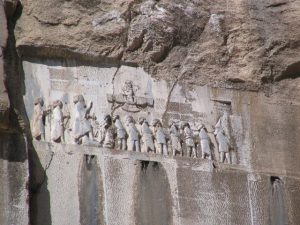 Today I leave you with a final quote by Pierre Briant regarding Darius I and his incredible contribution to the Persian language and the immortalization of that arya upon the granite face of Behistun. As you read this quote consider the reign of Darius as it relates to the history of Ezra and Nehemiah and the monumental importance of establishing Daniel 9 and the prophecy of 70 Sevens upon a rock solid historical foundation (excuse the pun).
Today I leave you with a final quote by Pierre Briant regarding Darius I and his incredible contribution to the Persian language and the immortalization of that arya upon the granite face of Behistun. As you read this quote consider the reign of Darius as it relates to the history of Ezra and Nehemiah and the monumental importance of establishing Daniel 9 and the prophecy of 70 Sevens upon a rock solid historical foundation (excuse the pun).
Though we fully reject the temptation to speak of evolution toward monotheism, we must recognize that in the official religion established by Darius, ahura-Mazda had a supreme position. He is designated as the sovereign deity of the pantheon, and the other deities are invoked only nominally. This privileged alliance conferred absolute power on the king, and no one could question athat power, except at the risk of divine displeasure. This is in fact the reason that the lie (drauga) and truth (arta) represent political and religious concepts simultaneously. The king rules over the lands and peoples (dahyava) thanks to the protection of Ahura-Mazda, and he must make truth reign and hunt down the lie among them in the name of the same precepts that govern relations between men and gods.
But what is most novel about this monument is quite simply the fact that the Persian language (arya) was being written for the first time. Despite the continuing debate over the precise meaning of ꭍ70 and the actual act of transcribing a text already inscribed in Elamite, the inclination today is to recognize that Persian writing constituted a major innovation by Darius (who did not hesitate to use it at Pasargadae in order to tap into the prestige of Cyrus to his own advantage). Until this event, the king’s deeds were transmitted in Persian exclusively through recitation and song and through the intermediary of masters of memory. To be sure, oral transmission remained a constant throughout the long history of the Persian people, as shown by the notable role of the magi in general. But this observation lends still more import to the first indubitable attestation of royal writing, inscribed in the presence of the king (and written on clay and parchment), a model that was followed by all of Darius’s successors. By this very action the Great King could claim that he himself was first of all a master of truth. He intended to control the tradition he wished to be transmitted to future generations: The royal word, inscribed for all posterity on the rock, was placed under the aegis of Ahura-Mazda as protection against all those who might want to destroy it (DB ꭍꭍ65-67). This is how the king transmitted not only the memory of his unique exploits but also his genealogy. In this way he took appropriate measure to have his word disseminated throughout the lands of his realm (DB ꭍꭍ70), after having it authenticated – the text had previously been read to him. At the same time, the memory of his royalty was fixed. No one, not even his successors (DB ꭍꭍ64), would have the right to question it: on the cliff at Behistun, the history of historians is forestalled for all time. (p. 126-127, From Cyrus to Alexander by Pierre Briant)
Next Time
Yahweh willing in my next article we’ll continue by exploring more of what the Bible has to say about the great Persian king whom it identifies as Darius even Artaxerxes.
Authors Note:
This is a multi-part series of articles responding to the Associates for Biblical Research criticism of my view of 2nd temple history as presented in an article on their website entitledThe Seraiah Assumption.
Articles related to this series:
The Seraiah Assumption by Rick Lanser of Associates for Biblical Research
The Seraiah Assumption: Wrapping up Loose Ends by Rick Lanser
My response to Rick Lanser’s – The Seraiah Assumption:
Introduction – The Associates for Biblical Research Responds to the Artaxerxes Assumption
Part I – Cyrus to Darius: The 2nd Temple Context of Ezra 4
Part II – Darius & Artaxerxes: The Context of the Word to Restore & Build Jerusalem
Part III – Darius the great Persian Artaxerxes: A Contextual Look at the Book of Ezra in the Light of Persian History
Part IV – Darius and the Kingdom of Arta
Part V – Darius, Artaxerxes, & the Bible: Confirming Royal Persian Titulature
Part VI – Mordecai & the Chronological Context of Esther
Part VII – Esther, Ahasuerus, & Artaxerxes: Who was the Persian King of 127 Provinces?
Part VIII – Darius I: A Gentile King at the Crux of Jewish Messianic History
Part IX – The Priests & Levites of Nehemiah 10 & 12: Exploring the Papponymy Assumption

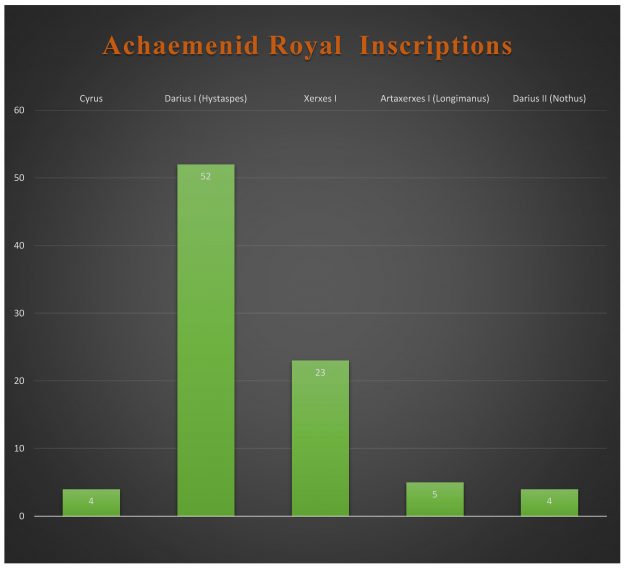
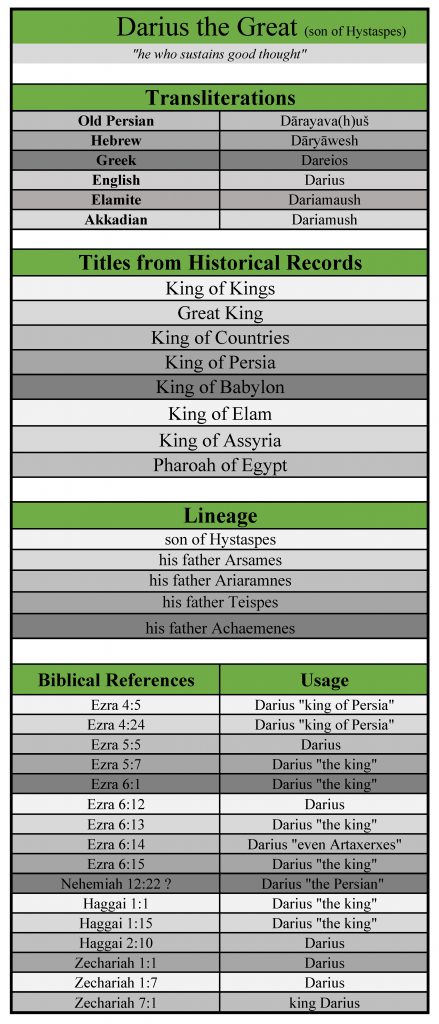
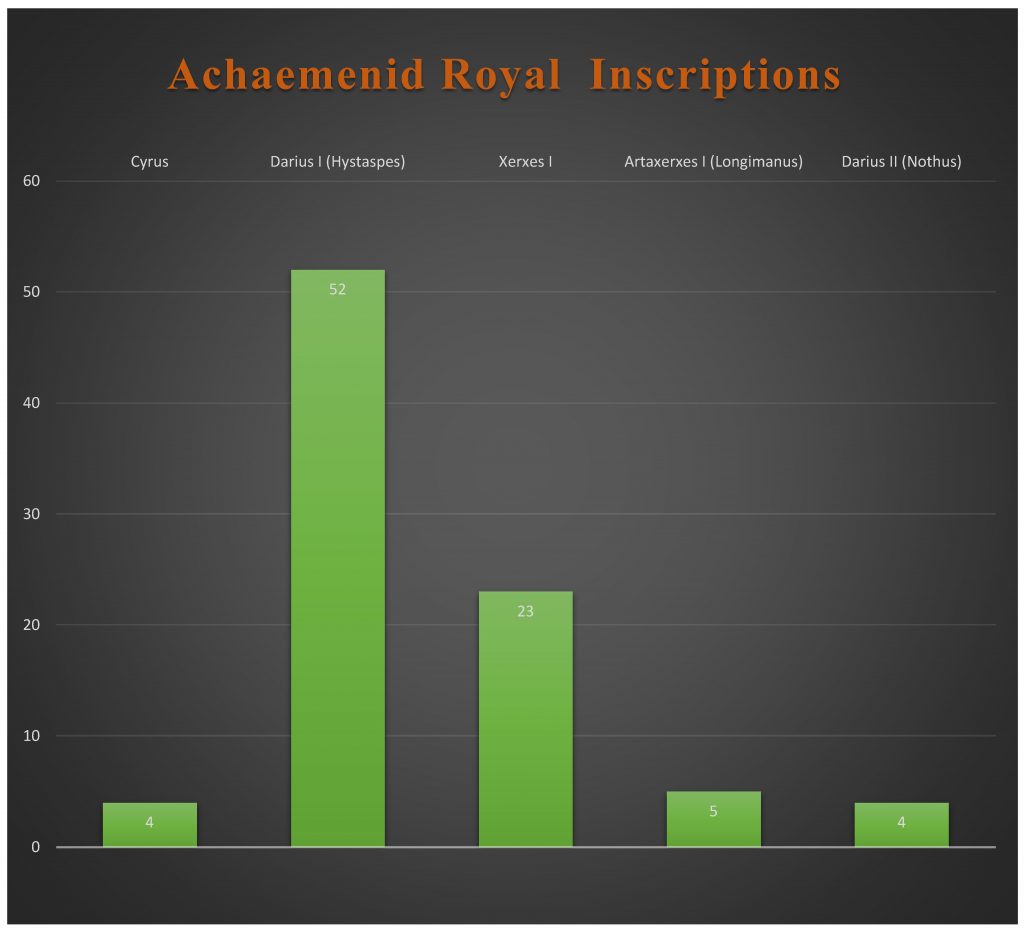
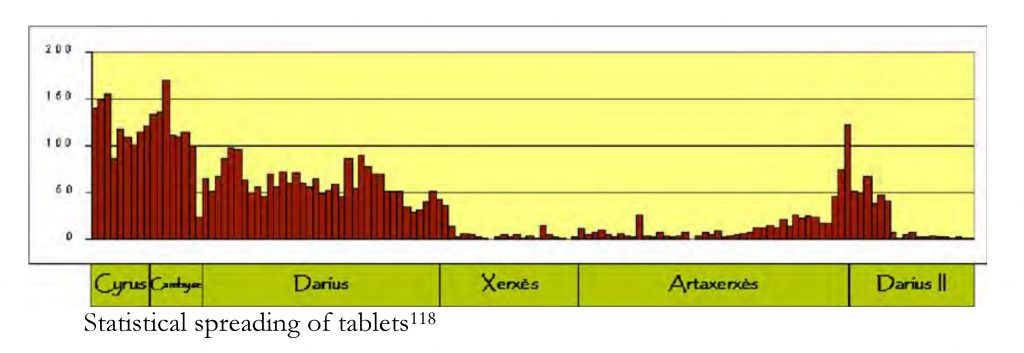
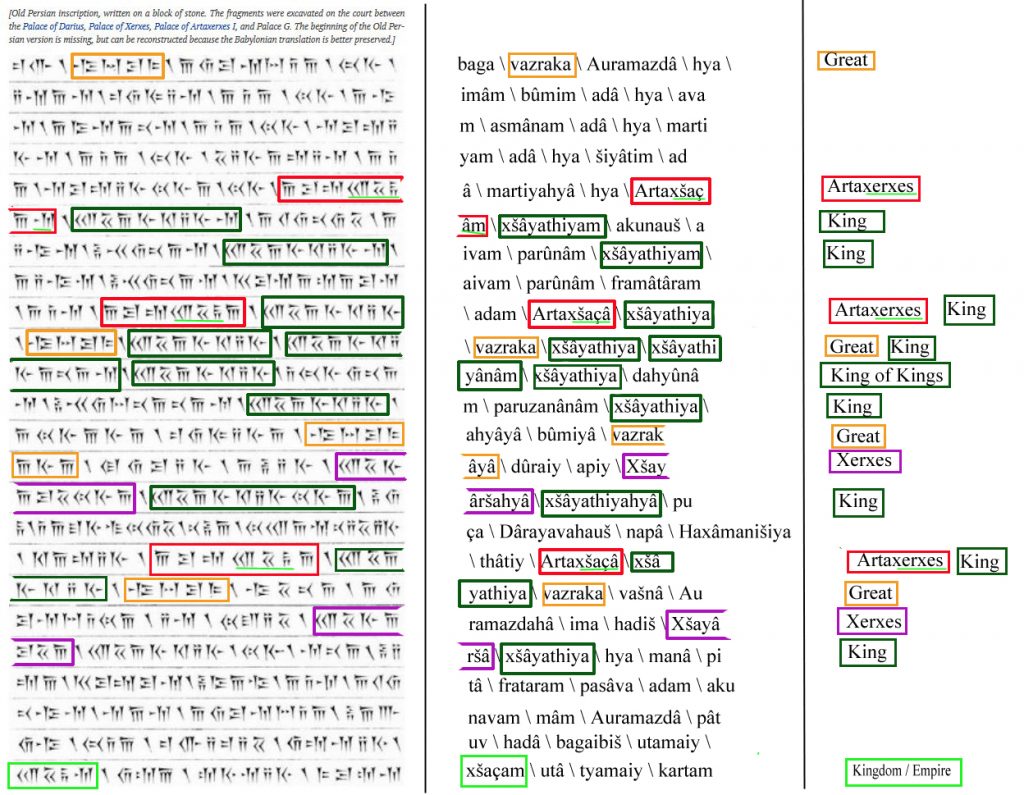
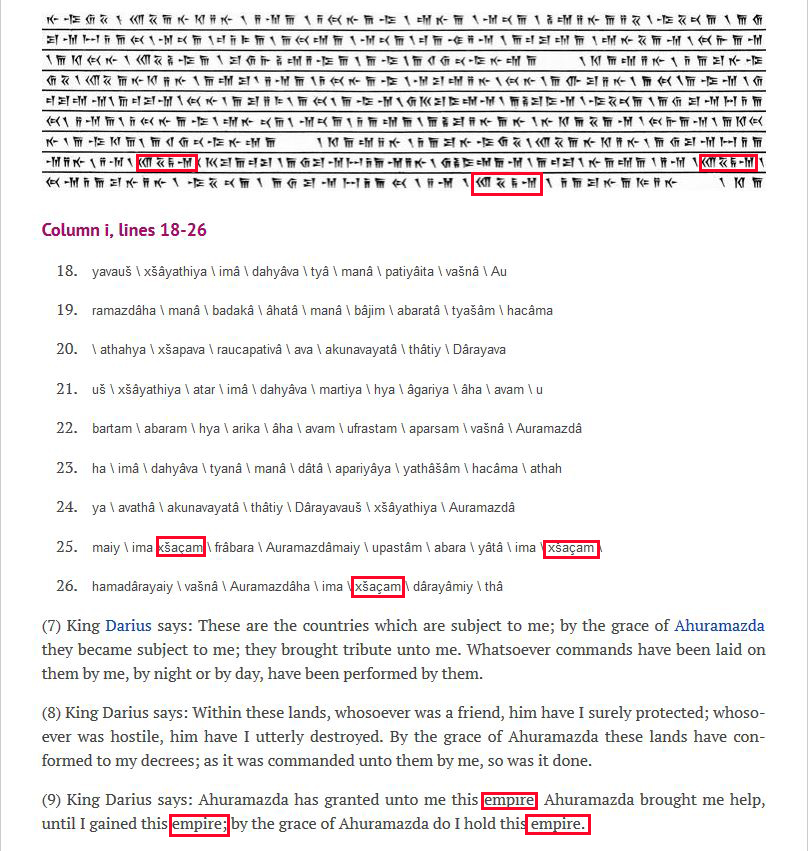
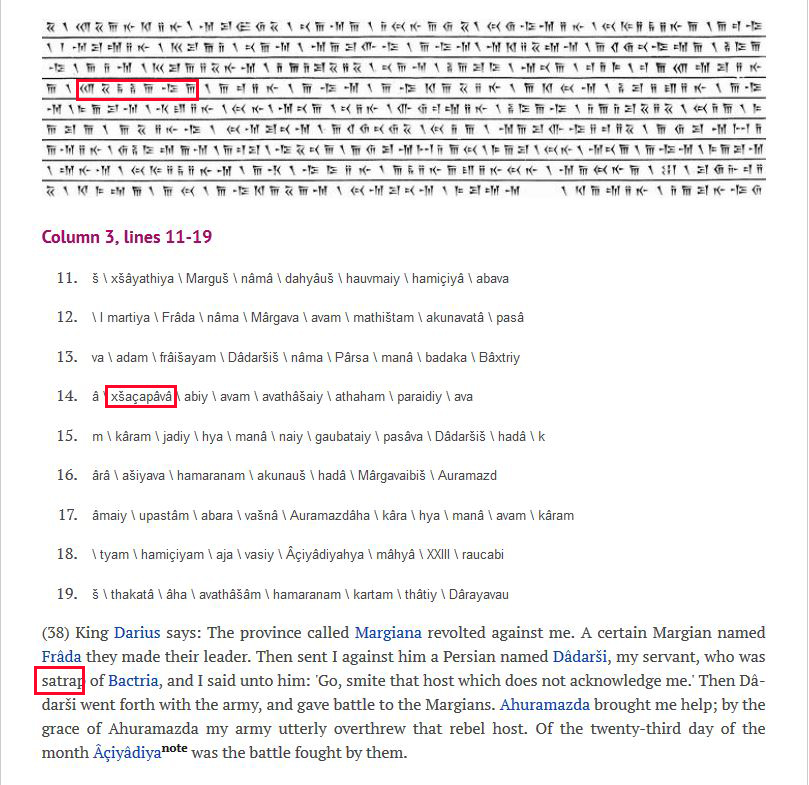
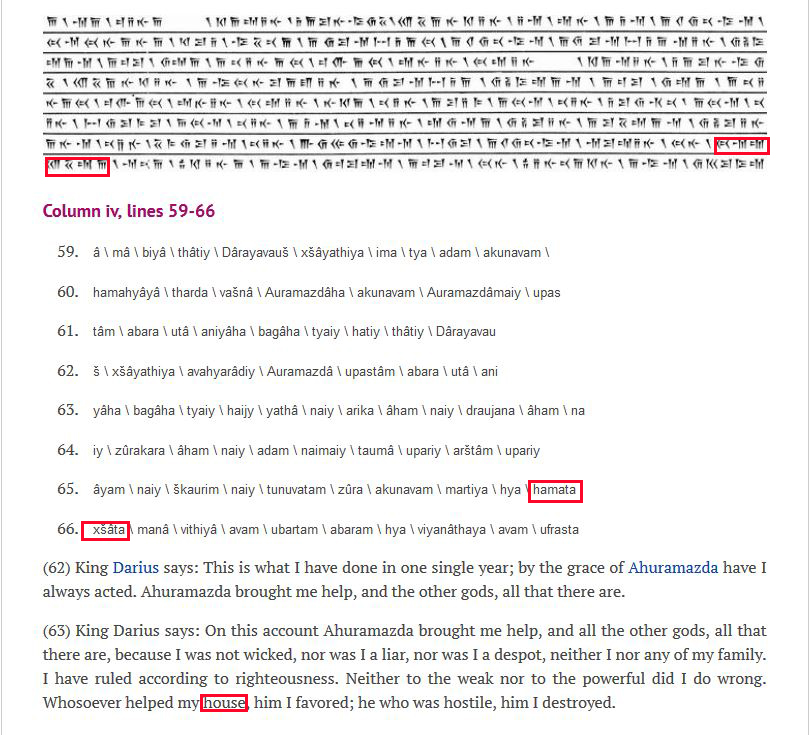
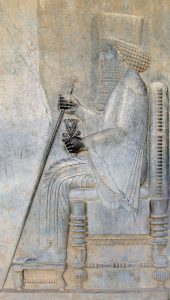



Pingback: Daniel 9: A Word, Decree, or Commandment? | Daniel's Seventy Weeks